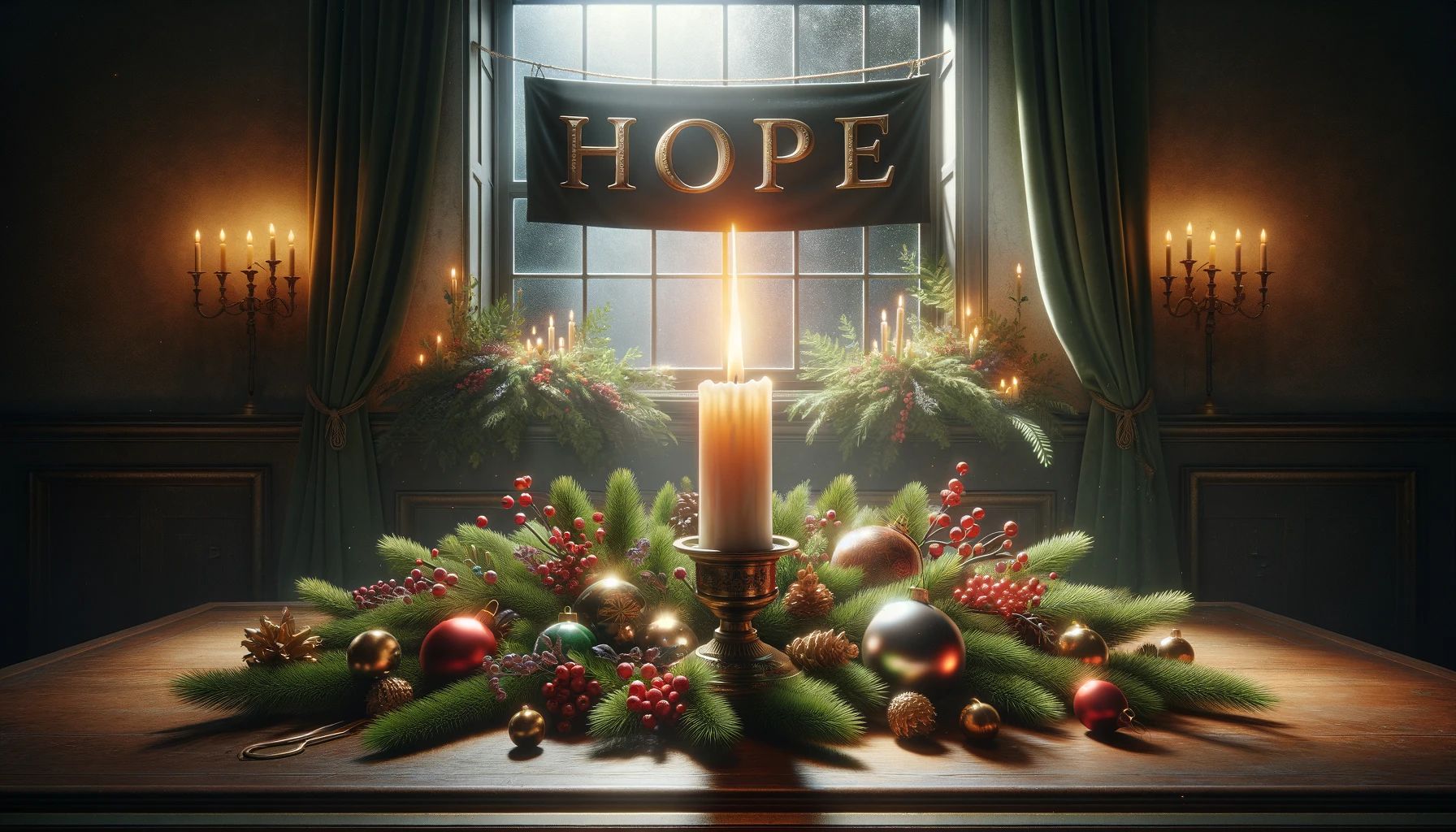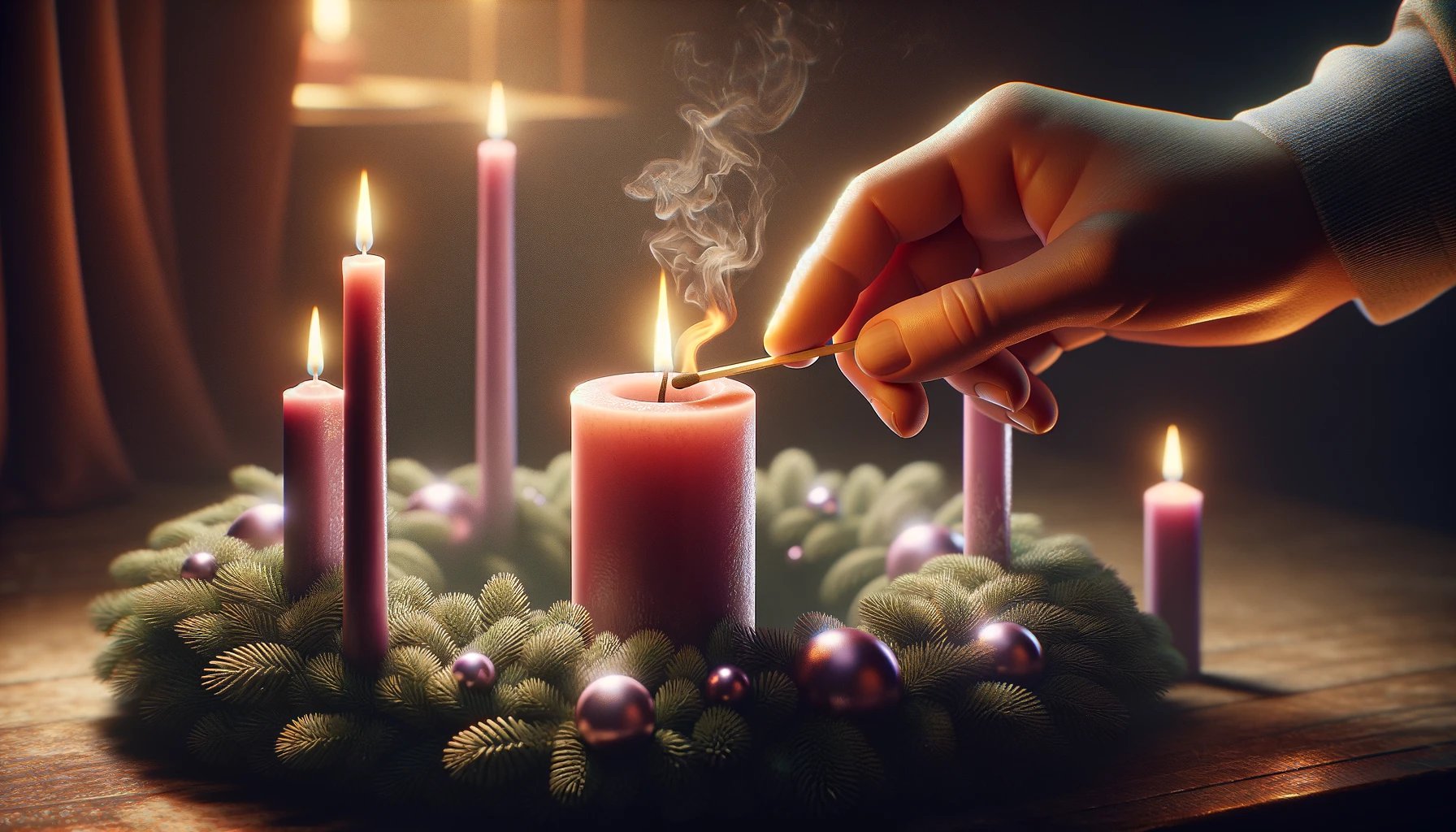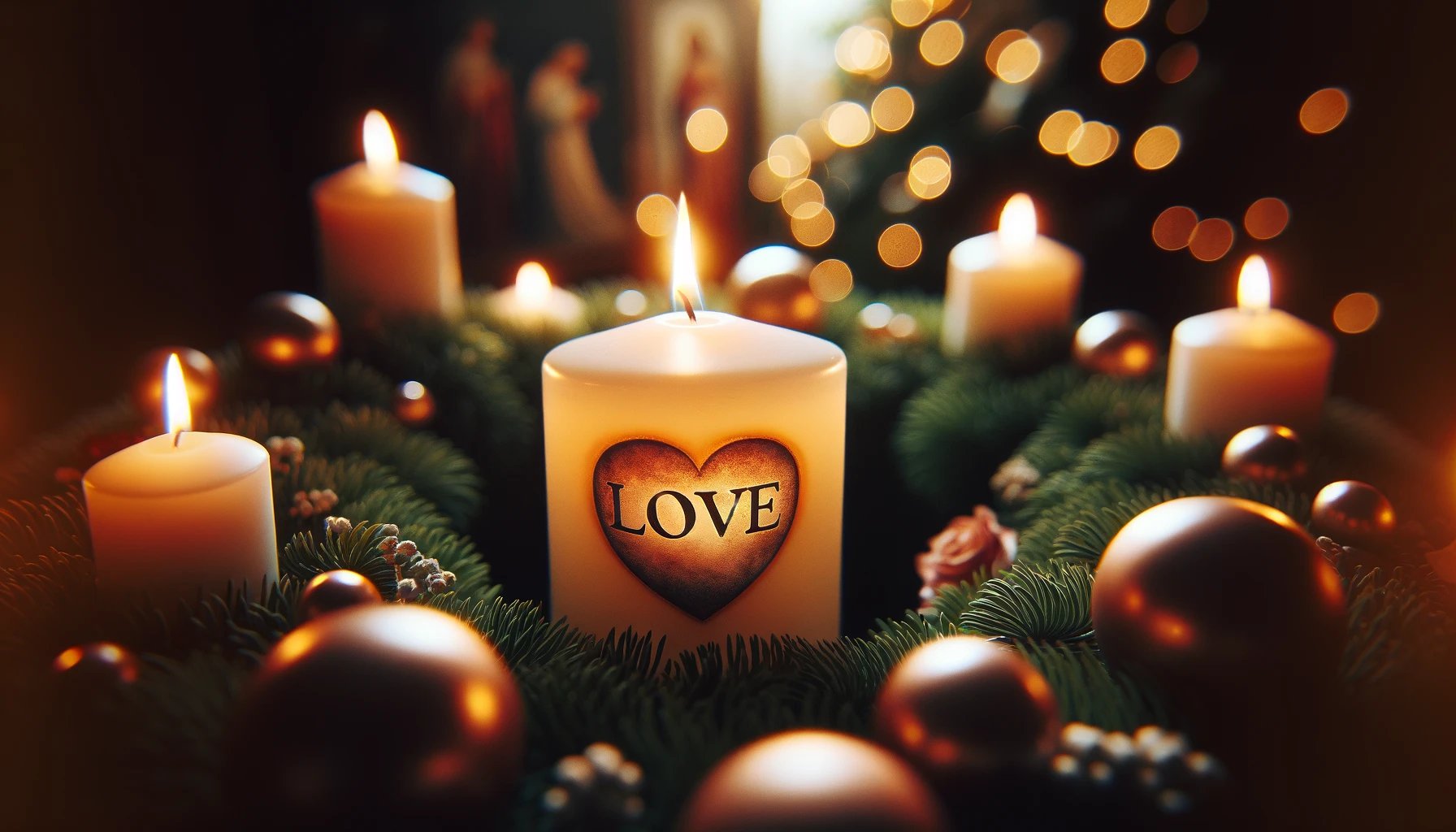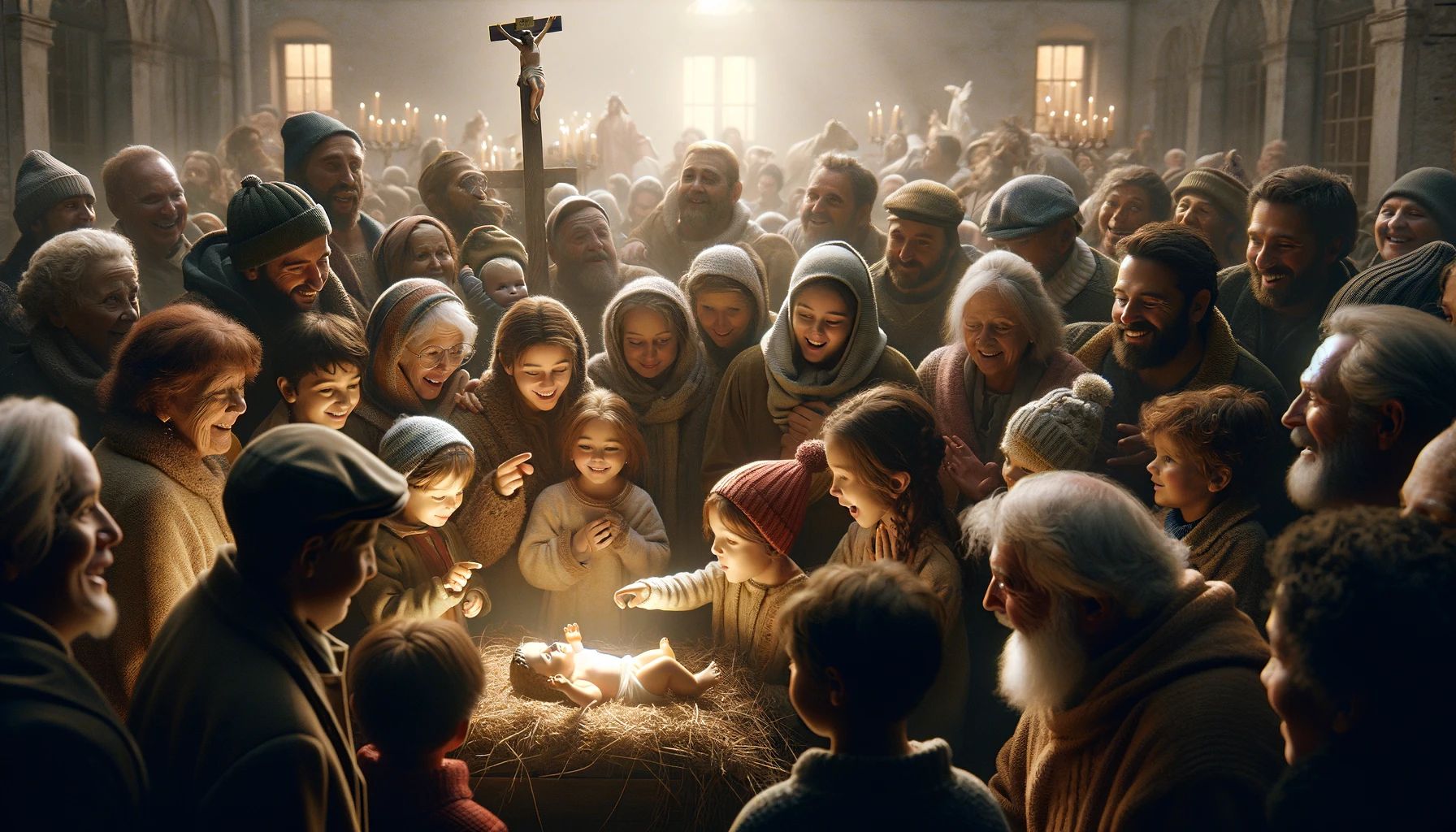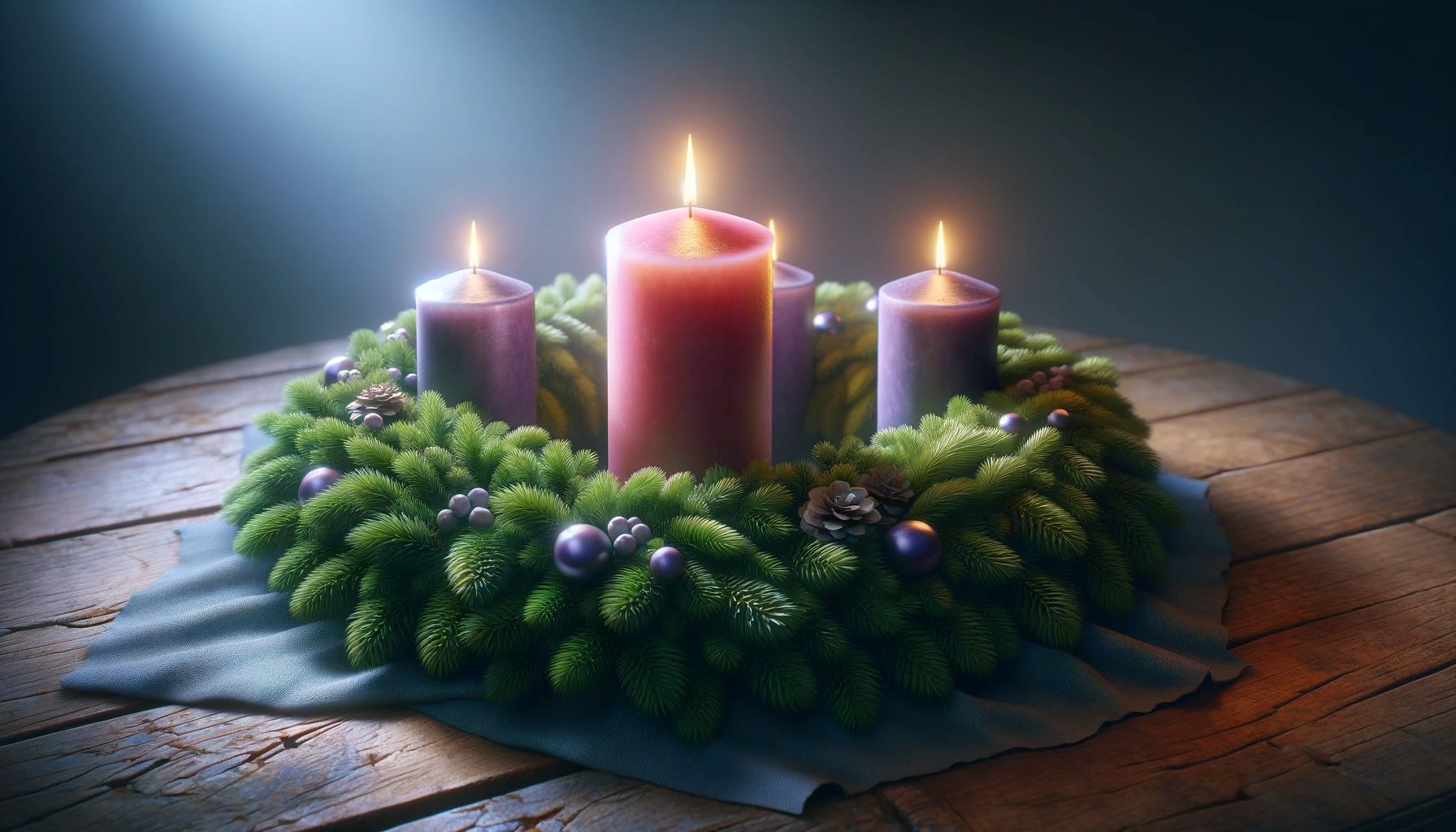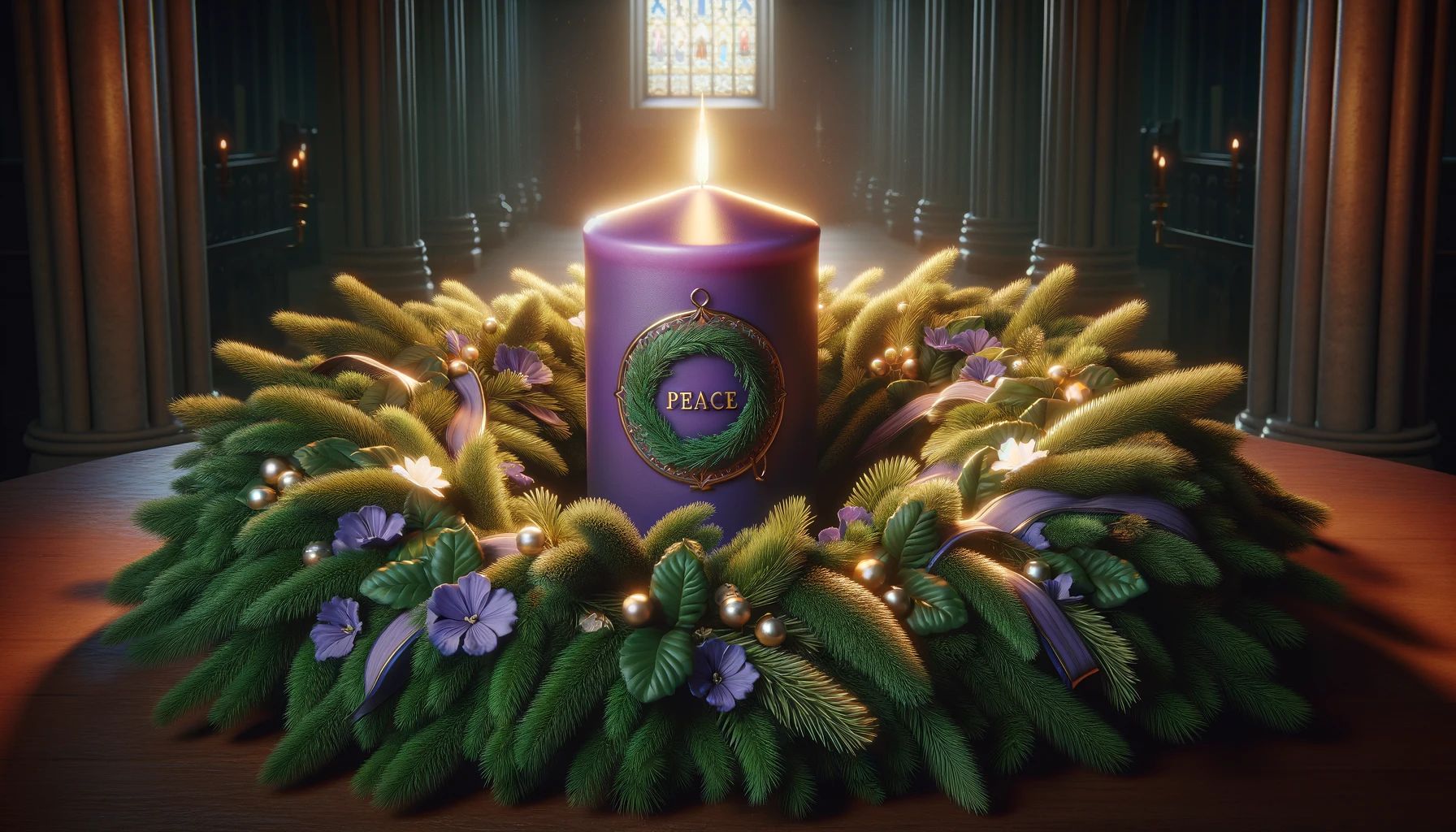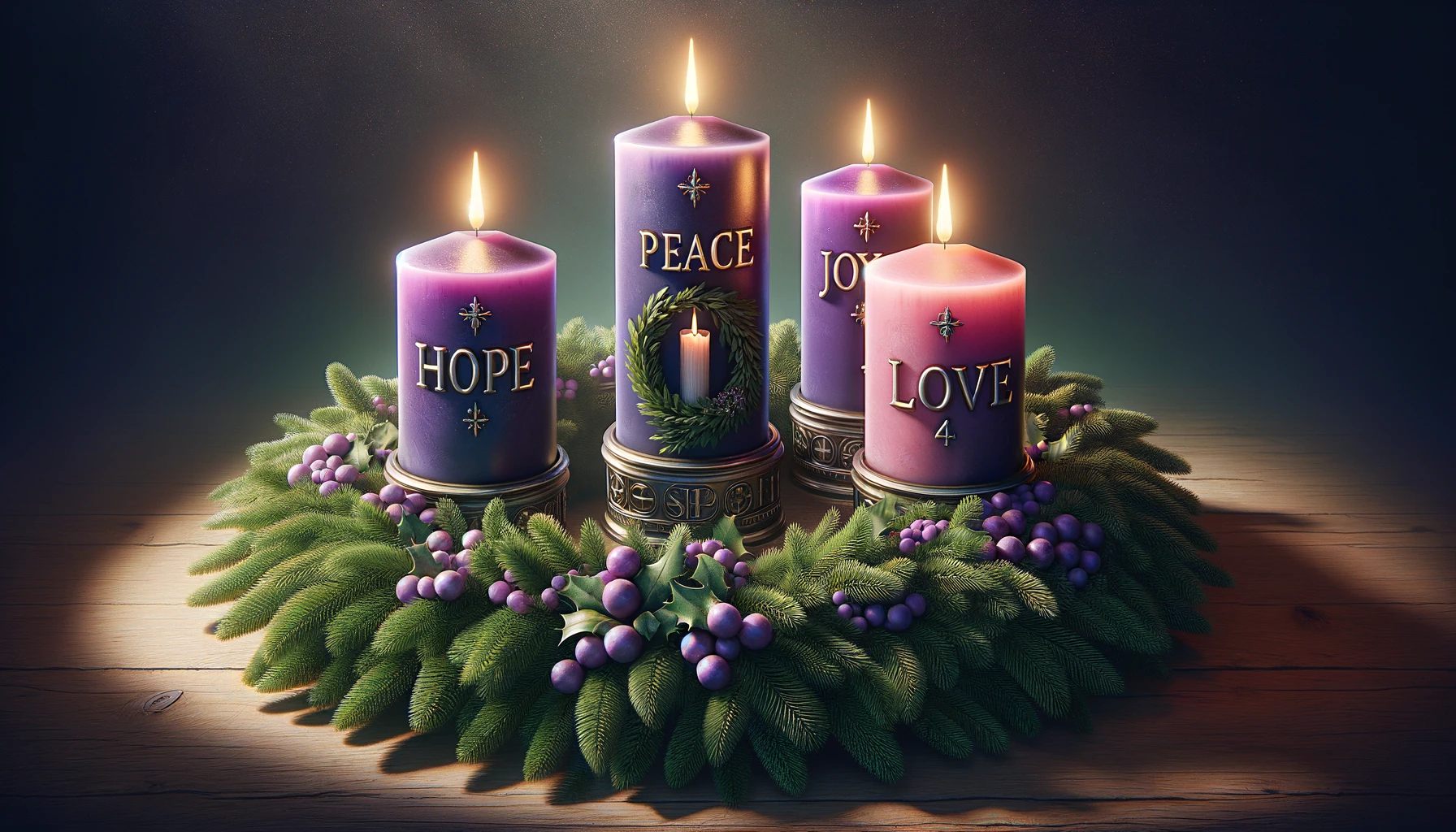Home>Special Themes>What Does The Third Purple Candle Mean In Advent


Special Themes
What Does The Third Purple Candle Mean In Advent
Published: February 13, 2024
Ericka Andersen, an editor at Christian.net, expertly merges digital strategy with content creation, focusing on faith and societal issues. Her communication skills enhance the platform's engaging narratives, fostering meaningful dialogue on belief's impact on society.
Discover the significance of the third purple candle in Advent and its special themes. Learn about the symbolism and traditions associated with this important part of the Advent season.
(Many of the links in this article redirect to a specific reviewed product. Your purchase of these products through affiliate links helps to generate commission for Christian.net, at no extra cost. Learn more)
Table of Contents
Introduction
Advent, a time of anticipation and preparation, holds significant cultural and religious importance for many people around the world. It marks the beginning of the liturgical year in Western Christianity and is a period of spiritual reflection leading up to the celebration of Christmas. Central to the observance of Advent is the Advent wreath, a cherished symbol that embodies the essence of this season.
The Advent wreath, typically adorned with evergreen foliage and candles, serves as a visual representation of the passage of time and the spiritual journey towards the birth of Jesus Christ. Each element of the wreath carries profound symbolism, and the lighting of its candles is a ritual that holds deep meaning for those who observe this tradition.
As we delve into the significance of the third purple candle in the context of Advent, it is essential to understand the historical and symbolic foundations of this tradition. By exploring the origins and cultural significance of Advent, we can gain a deeper appreciation for the rituals and customs associated with this sacred time of year. Let us embark on a journey to unravel the rich tapestry of Advent traditions and discover the profound symbolism encapsulated within the third purple candle.
Read more: What Do The Purple Candles Mean In Advent
The History of Advent
The history of Advent can be traced back to the early centuries of Christianity, with its roots firmly embedded in the religious practices of the Western Church. The word "Advent" originates from the Latin word "adventus," meaning "coming" or "arrival." This concept of anticipation and preparation for the arrival of a significant event or person is at the core of the Advent tradition.
The earliest recorded observance of Advent dates back to the 4th and 5th centuries in Gaul (modern-day France). During this period, Christians engaged in a period of fasting and spiritual reflection in the weeks leading up to the celebration of the birth of Jesus Christ. This preparatory period was initially focused on the Second Coming of Christ, emphasizing the themes of repentance, penance, and spiritual readiness.
Over time, the observance of Advent evolved to encompass not only the anticipation of Christ's return but also the joyful anticipation of his birth. The liturgical season of Advent was formally established in the 6th century, with the duration of the observance varying among different Christian denominations. In the Western Church, Advent traditionally begins on the fourth Sunday before Christmas, marking the start of the liturgical year.
The themes of Advent, including hope, peace, joy, and love, are reflected in the readings, prayers, and rituals associated with this season. The symbolic imagery of light and darkness, represented by the lighting of Advent candles, serves as a poignant reminder of the spiritual journey from darkness to light, culminating in the birth of Jesus Christ.
Throughout history, the observance of Advent has been shaped by diverse cultural influences and regional traditions, contributing to the rich tapestry of customs associated with this sacred time of year. The Advent wreath, with its evergreen foliage symbolizing eternal life and the circular shape representing God's unending love, has become a focal point of Advent observance in many Christian households and congregations.
As we delve into the history of Advent, it becomes evident that this tradition has endured through the centuries, serving as a profound reminder of the enduring significance of the birth of Jesus Christ and the timeless themes of hope, faith, and spiritual renewal.
The history of Advent is a testament to the enduring legacy of this sacred tradition, which continues to inspire and uplift individuals and communities around the world as they embark on a journey of spiritual preparation and joyful anticipation during the Advent season.
The Symbolism of the Advent Wreath
The Advent wreath, a cherished symbol of the Advent season, embodies profound symbolism that resonates deeply with the themes of anticipation, hope, and spiritual preparation. Comprising a circular wreath adorned with evergreen foliage and candles, this iconic emblem holds rich significance, with each element representing timeless spiritual truths.
The circular shape of the Advent wreath symbolizes eternity and the unending nature of God's love and mercy. It serves as a powerful reminder of the eternal nature of the divine and the unbroken continuity of faith across generations. The evergreen foliage, often comprising holly, pine, or fir, represents the enduring nature of life and the promise of renewal, even in the midst of winter's dormancy. This symbolism reflects the timeless message of hope and the assurance of new beginnings that lie at the heart of the Advent season.
Central to the Advent wreath are the candles, typically arranged in a circle atop the foliage. The lighting of these candles during the weeks leading up to Christmas holds profound significance, with each candle representing a distinct theme or aspect of the Advent journey. The traditional arrangement includes three purple candles, one pink candle, and a central white candle, each carrying its own symbolic meaning.
The purple candles, lit on the first, second, and fourth Sundays of Advent, symbolize penitence, preparation, and the longing for the coming of Christ. The color purple has deep spiritual connotations, signifying repentance, humility, and the anticipation of the Messiah's arrival. It serves as a poignant reminder of the need for introspection and spiritual readiness as believers prepare to welcome the birth of Jesus Christ.
The pink candle, often lit on the third Sunday of Advent, represents joy and rejoicing amidst the solemnity of the season. This vibrant hue symbolizes the profound joy that emanates from the anticipation of Christ's birth, infusing the Advent journey with a sense of exuberance and celebration.
Finally, the central white candle, known as the Christ candle, is lit on Christmas Eve or Christmas Day, signifying the culmination of the Advent season and the arrival of the long-awaited Messiah. This radiant candle represents the purity and light of Christ, illuminating the world with the hope and promise of salvation.
As the Advent wreath takes its place in homes, churches, and communities, it serves as a visual and symbolic focal point for the spiritual journey of Advent. The act of lighting the candles each week fosters a sense of anticipation, reflection, and unity, drawing individuals and families into a shared experience of faith and hope.
In essence, the Advent wreath encapsulates the timeless themes of faith, hope, and spiritual renewal, offering a poignant reminder of the enduring significance of the Christmas story and the profound joy that accompanies the birth of Jesus Christ.
The Meaning of the Third Purple Candle
The third purple candle, also known as the "Shepherd Candle" or "Gaudete Candle," holds profound significance within the Advent tradition. As the Advent season progresses, the lighting of the third purple candle on the Advent wreath marks a pivotal moment of transition and anticipation. This candle, distinct in its symbolism and purpose, embodies the theme of joy amidst the solemnity of spiritual preparation.
The color purple, traditionally associated with penitence and preparation, takes on a nuanced meaning with the lighting of the third candle. While the first two purple candles represent the themes of hope and love, the third purple candle introduces a shift in tone, infusing the Advent journey with a sense of joyful anticipation. This shift is reflected in the Latin word "Gaudete," which means "rejoice" or "joy." The third Sunday of Advent is often referred to as Gaudete Sunday, emphasizing the theme of rejoicing in the midst of spiritual contemplation.
The symbolism of the Shepherd Candle draws inspiration from the biblical imagery of the shepherds who received the joyous tidings of Christ's birth. Their humble and faithful response to the angelic proclamation embodies the essence of joyful anticipation and serves as a timeless reminder of the transformative power of Christ's arrival. The Shepherd Candle, therefore, represents the joy that emanates from the anticipation of the Messiah's birth, inviting believers to embrace a spirit of exuberant hope and celebration.
As the third purple candle is lit, its radiant flame illuminates the Advent journey with a sense of warmth and anticipation. It serves as a beacon of hope, reminding individuals of the profound joy that accompanies the imminent arrival of Christ. The lighting of the Shepherd Candle encourages believers to pause and rejoice amidst the introspective nature of the Advent season, fostering a spirit of gratitude and exultation as the celebration of Christmas draws near.
In essence, the third purple candle symbolizes a transformative moment of joyful anticipation within the Advent narrative. It invites individuals to embrace the profound joy that emanates from the anticipation of Christ's birth, infusing the season with a sense of exuberance and celebration. As the flickering flame of the Shepherd Candle casts its gentle glow, it serves as a poignant reminder of the enduring promise of hope and the radiant joy that accompanies the arrival of the long-awaited Messiah.
The Meaning of the Third Purple Candle encompasses a profound invitation to rejoice and embrace the transformative power of Christ's imminent arrival, infusing the Advent season with a sense of exuberant hope and joyful anticipation.
The Importance of the Third Purple Candle in Advent Traditions
The third purple candle holds a pivotal role in the tapestry of Advent traditions, serving as a beacon of joy and anticipation amidst the solemnity of spiritual preparation. Its significance extends beyond the visual symbolism of the Advent wreath, resonating deeply with the themes of hope, rejoicing, and the transformative power of Christ's imminent arrival.
As the Advent season unfolds, the lighting of the third purple candle marks a significant shift in tone, infusing the spiritual journey with a sense of exuberant anticipation. This transition is encapsulated in the Latin word "Gaudete," meaning "rejoice," which underscores the theme of joyful celebration amidst the introspective nature of Advent. The Shepherd Candle, as it is often referred to, draws inspiration from the biblical imagery of the shepherds who received the angelic proclamation of Christ's birth. Their humble and faithful response serves as a timeless reminder of the profound joy that accompanies the anticipation of the Messiah's arrival.
The third purple candle embodies the essence of joyful anticipation, inviting individuals to embrace a spirit of exuberant hope and celebration. Its radiant flame illuminates the Advent journey with warmth and joy, serving as a beacon of hope amidst the spiritual contemplation of the season. This pivotal moment of transition encourages believers to pause and rejoice, fostering a spirit of gratitude and exultation as the celebration of Christmas draws near.
In the broader context of Advent traditions, the third purple candle serves as a poignant reminder of the enduring promise of hope and the radiant joy that accompanies the arrival of the long-awaited Messiah. Its symbolism resonates deeply with individuals and communities, inviting them to embrace the transformative power of Christ's imminent arrival and infusing the season with a sense of exuberant hope and joyful anticipation.
As the flickering flame of the Shepherd Candle casts its gentle glow, it beckons believers to rejoice and embrace the profound joy that emanates from the anticipation of Christ's birth. The third purple candle stands as a testament to the enduring significance of the Advent narrative, inviting individuals to partake in the timeless tradition of joyful anticipation and spiritual renewal.
In essence, the third purple candle holds a cherished place within the fabric of Advent traditions, embodying the timeless themes of hope, joy, and the transformative power of Christ's imminent arrival. Its significance serves as a poignant reminder of the enduring promise of hope and the radiant joy that accompanies the anticipation of the long-awaited Messiah's birth.
Read more: What Does The Purple Of Advent Mean
Conclusion
In conclusion, the third purple candle in the context of Advent holds profound significance, serving as a beacon of joy and anticipation amidst the spiritual journey leading up to Christmas. As the Advent season unfolds, the lighting of the third purple candle marks a pivotal moment of transition, infusing the season with a spirit of exuberant hope and celebration. The symbolism of the Shepherd Candle, also known as the Gaudete Candle, invites individuals to embrace the transformative power of Christ's imminent arrival, fostering a sense of gratitude and exultation as the celebration of Christmas draws near.
The Advent wreath, with its timeless symbolism and ritualistic lighting of candles, serves as a visual and spiritual focal point for individuals and communities during the Advent season. Each element of the wreath, from the circular shape symbolizing eternity to the vibrant hues of the candles representing distinct themes, contributes to the rich tapestry of Advent traditions. The third purple candle, in particular, embodies the essence of joyful anticipation, inviting believers to rejoice amidst the introspective nature of the season.
As the flickering flame of the Shepherd Candle casts its gentle glow, it serves as a poignant reminder of the enduring promise of hope and the radiant joy that accompanies the anticipation of the long-awaited Messiah's birth. The third purple candle stands as a testament to the enduring significance of the Advent narrative, inviting individuals to partake in the timeless tradition of joyful anticipation and spiritual renewal.
In essence, the third purple candle in Advent encapsulates the profound joy that emanates from the anticipation of Christ's birth, infusing the season with a sense of exuberance and celebration. Its symbolism resonates deeply with individuals and communities, inviting them to embrace the transformative power of Christ's imminent arrival and fostering a spirit of gratitude and exultation as the celebration of Christmas draws near.
As we reflect on the rich history and symbolism of Advent, it becomes evident that the third purple candle holds a cherished place within the fabric of Advent traditions, embodying the timeless themes of hope, joy, and the transformative power of Christ's imminent arrival. Its significance serves as a poignant reminder of the enduring promise of hope and the radiant joy that accompanies the anticipation of the long-awaited Messiah's birth.

